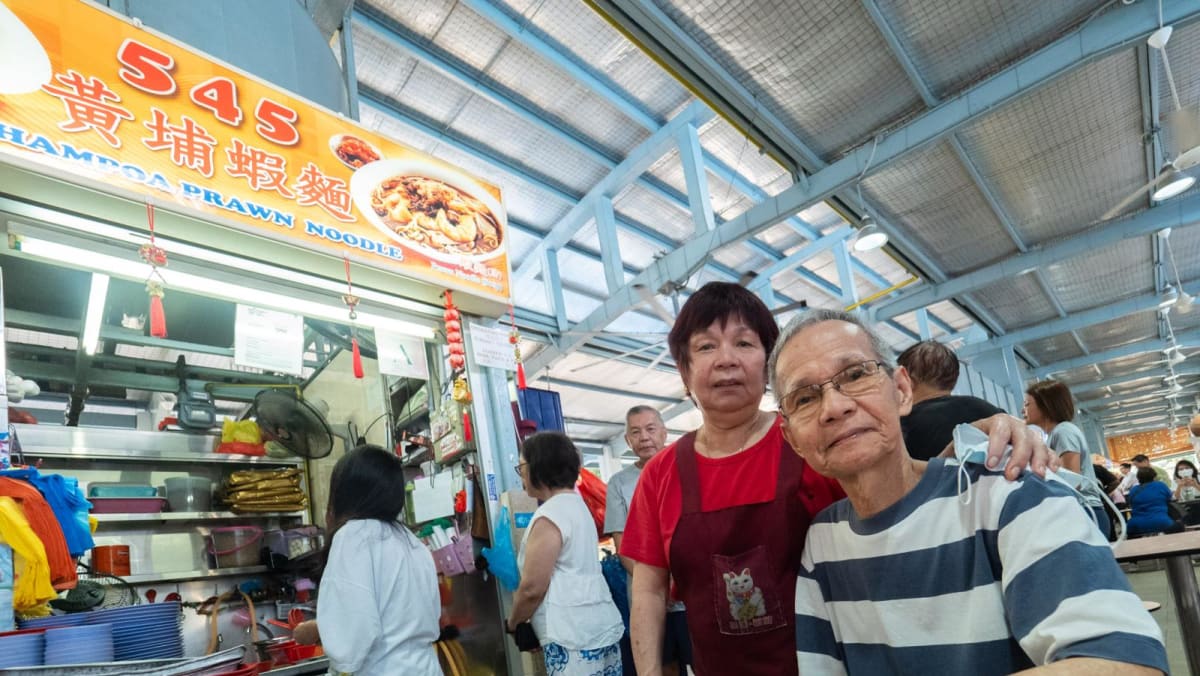For several months now, Mr Tan has been serving plates of fried hokkien mee to customers at a food centre in central Singapore as though he is a seasoned veteran.
However, discerning regulars who patronise the stall might notice a change in taste, because their noodles used to be prepared by a woman.
As it turns out, Mr Tan is not the stallholder. The stall belongs to the woman, who is in her 70s. She was ill and has not been mobile.
Mr Tan said in Mandarin that she does not have the strength to run the stall by herself for the time being. “I’m temporarily helping her, we’ll monitor what her health is like first.
“If she gets better, then she can probably return to work but just come a bit later in the day.”
Yet, Mr Tan is aware that by helping out his friend for such a lengthy period of time, it is technically breaching a rule in his friend’s tenancy agreement with the National Environment Agency (NEA) that requires stallholders to personally operate their stalls.
Aimed at preventing stallholders from subletting their stalls to others by mandating the physical presence of the registered owner, the regulation ultimately prevents rents and food prices from hiking and allows enterprising hawkers to enter the industry fairly.
NEA’s long-standing rule became the subject of controversy earlier this year after one owner of a nasi lemak stall took to Facebook to rail against it, after his pregnant wife – the registered owner – was warned for failing to be physically present at her stall in Yishun.
In this case, the stall owner adopted a franchise model, operating at least 26 stalls around Singapore, including in malls and privately run food centres.
Dr Koh Poh Koon, Senior Minister of State for Sustainability and the Environment, said in a Facebook post in March that NEA identified and warned more than 230 stalls last year because they were not personally manned by owners.
Of these, 30 were issued with notices to terminate their tenancies when they did not heed the warnings.
From these warnings and notices, more than 100 stalls terminated their tenancies, while the rest were able to continue operations because they had given valid reasons for their absence.
With around half of the hawkers who were warned by NEA ultimately let off the hook because they were found to have genuine reasons, CNA TODAY visited eight hawker centres to find out how stallholders – particularly those who do not operate franchise chains – are coping with this rule.
Most agreed that such a rule is effective in deterring subletters and preventing large franchise chains from dominating NEA-run hawker centres, but there were also older stallholders who said that the rule was forcing them out of the trade.
Anecdotally, many ageing stallholders still relied on hired assistants to run the majority of the business, sometimes for the whole day.
Their reasons include circumstances that are beyond their control, such as illness, fatigue, or suddenly having to pick up supplies.
For some, it meant having to explain their absences to NEA officers who carry out regular inspections.
A few hawkers said they would even work through sickness and poor health in order to not put their businesses at risk of closure.
Despite the leeway already granted by the authorities, two experts who spoke to CNA TODAY said that there was a need for greater flexibility.
They raised suggestions such as allowing stall assistants to “hold the fort” temporarily, as well as vacation days for hawkers.
Dr Lily Kong, president of Singapore Management University (SMU) who researches urban infrastructure and also co-wrote a paper on hawker culture, said: “The desire to prevent subletting is understandable. However, the manner in which it is effected requires rethinking.”
